Bed bugs are one of the worst types of pests you can have at your home. They are great at hiding making them hard to spot, they reproduce quickly, and they feed on you.
Unfortunately, If you have never had bed bugs, it can be hard to determine if do have an infestation.
Don’t worry I’ve got you covered.
In this post, I will review the 9 key signs you can look for to determine if you have a bed bug infestation.
Let’s get started.
1. Skin Irritation
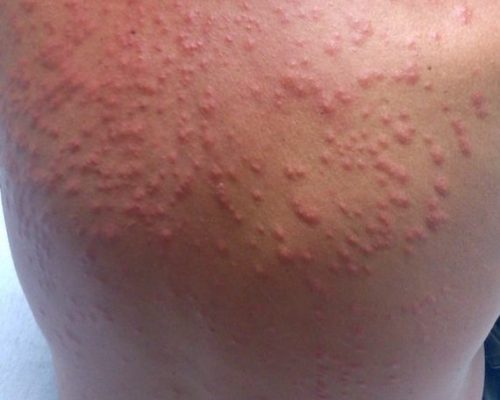
Skin irritation and allergic reactions are common when there is a bed bug infestation.
Skin irritations are caused when you come into contact with bed bug stains, skin casings, or other bed bug debris.
Not everyone will experience skin irritations. Some people may not have any adverse reactions.
Another sign of bed bugs is allergic reactions. Allergic reactions happen when bed bugs bite you.
Allergic reactions to bed bug bites can cause hives, swelling, and intense itching.
But, similar to skin irritations, allergic reactions do not happen to everyone.
Certain people may not react to bed bug bites, including the welts and itchiness that most people experience.
2. Brown Stains
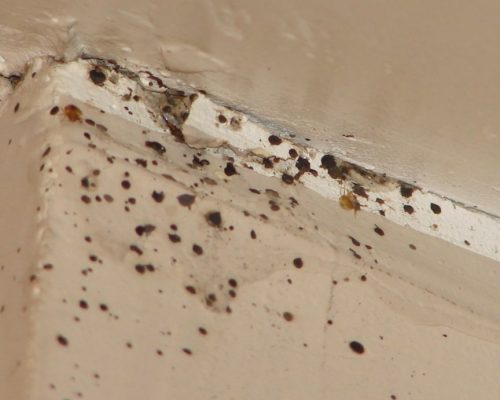
Another common sign of bed bugs is brown stains.
These stains are fecal stains. They are comparable to coffee grounds or black pepper on the wall.
Bed bug fecal stains often go unnoticed. This happens for two reasons:
- They are small
- They blend in with sheets, bed frames, and other items around the house.
Over time, as infestations grow, these stains will become more apparent.
This is because bed bugs hide in groups, and the fecal stains will become darker and larger.
Some key places to look for brown fecal stains are:
- Mattress creases and folds
- Under pillows
- On walls behind furniture
- Underneath mattresses
- Around boxsprings
- On bed frames
During the early stages of an infestation, these stains will stay localized around the bed.
As the infestation grows, these stains will become more visible, and they will spread beyond the bed, such as behind furniture or on walls.
3. Bloodstains
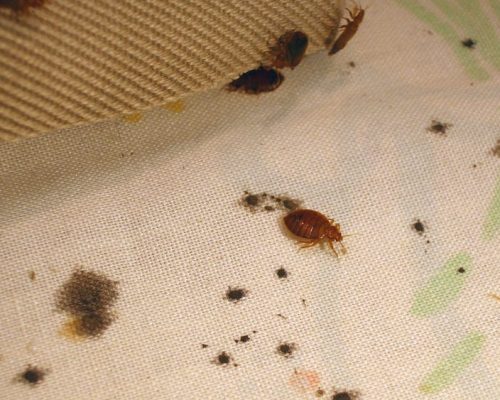
Bloodstains are one of the most common signs of bed bugs.
These stains happen for two reasons:
- After a bed bug feeds, they leave small blood droplets as they return to their hiding spots.
- We smash them when we move in our sleep.
These stains are expected in early infestations as well as older infestations.
If you have bites on your body, inspect your bed or blanket near where you rested that body part.
You will likely find red specks on your bed.
As the infestation matures, these stains will become more apparent.
It’s important to note that these stains only happen if the bed bug has successfully fed. This is because the bloodstains are not the bed bugs’ blood.
These stains come from the blood that bed bugs have sucked out of humans.
4. Dead Bed Bugs
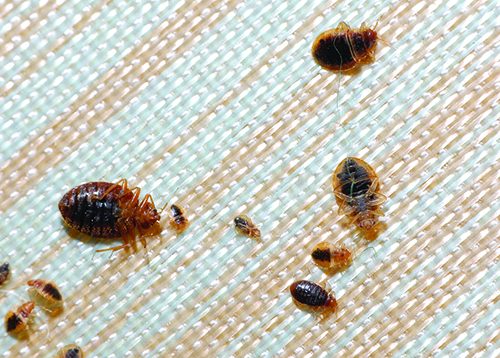
Dead bed bugs are another sign of a bed bug infestation.
Bed bugs will die for different reasons:
- You smashed it in your sleep
- It was smashed by furniture or other items
- It died naturally.
You will typically find dead bed bugs close to your bed or where you sleep.
If you do find a dead bed bug, you should inspect your home immediately. This is a sign that there is much more hiding.
If you’re lucky, the dead bed bug is a straggler that hitchhiked into your home.
5. Musty Smell
Bed bugs produce a musty or mold-like smell. This scent is comparable to coriander or wet dog.
With smaller infestations, this scent may be unnoticeable.
With larger infestations, the scent is undeniable. This is especially true when you’re near large clusters of bed bugs and their hiding spots.
Bed bugs use this scent as a warning pheromone. If they are disturbed or experience distress, they will release this pheromone to alert other bed bugs to find protection.
You can use this smell as a sign that you’re on the right path. If you inspect your bedroom and begin to experience a must smell, you know you’re on the right path.
6. Red Bumps Or Welts / Bed Bug Bites
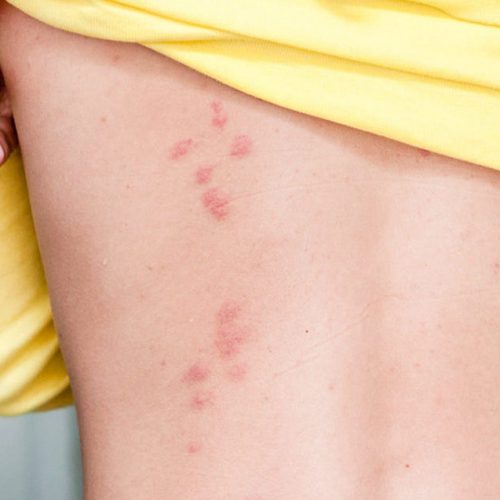
Bed bug bites are one of the most recognized signs of a bed bug infestation.
Bed bug bites can look similar to other bug bites. They form itchy welts around the site of the bite.
There are a few key distinctions between bed bug bites and other insect bites.
- Bed bug bites happen in clusters of 2-4 bites.
- They typically form a line or zig-zag pattern.
You are likely to find bed bug bites on your legs, back, and torso.
Not everyone has the same reaction to bed bug bites.
Some people might have allergic reactions, while others might not have any reaction at all.
The most common reaction to a bed bug bite is the standard red itchy welts.
7. Nymphs or Eggs
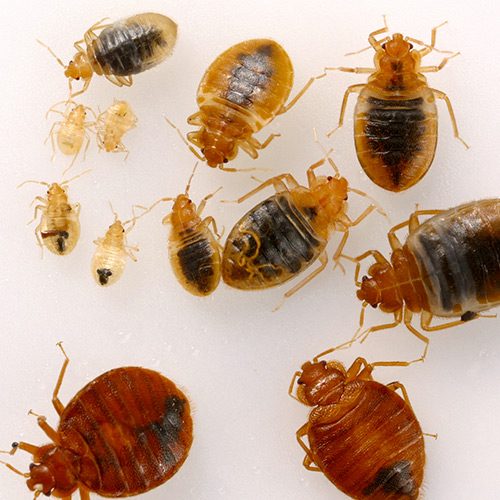
Bed bug nymphs and eggs are a sign of a growing infestation.
If you find nymphs or eggs in your home, there are many more bed bugs in your home.
To identify a nymph, look for these characteristics:
- Less than 4mm
- Six legs
- white or light brown
Bed bug eggs are white and measure around 1 mm. They look very similar to a grain of rice except about 1/4 of the size.
Females lay their eggs in confined locations such as seams, folds, cracks, and crevices. You will commonly find eggs in large clusters.
8. Adult Bed Bugs
Adult bed bugs are the most obvious and easiest way to confirm an infestation.
Adult bed bugs measure between 4mm and 5mm.
You won’t find bed bugs laying around or just walking across your bed.
Bed bugs are good at hiding and only come out when it’s time to feed.
Since they can recognize when their host is nearby, they only come out when you are nearby.
When looking for bed bugs, you want to look inside seams, folds, and crevices.
Some other familiar places you can find adult bed begs are:
- Mattresses seams and folds
- Under box spring
- On wood crevices on box spring
- Bed covers
- Pillow covers
- Drapery and curtains
- Small cracks or gaps on the bed frame
- Behind hanging pictures and other hanging items.
- Holes or crevices on walls or floorboards.
- Inside couches
9. Discarded Shells
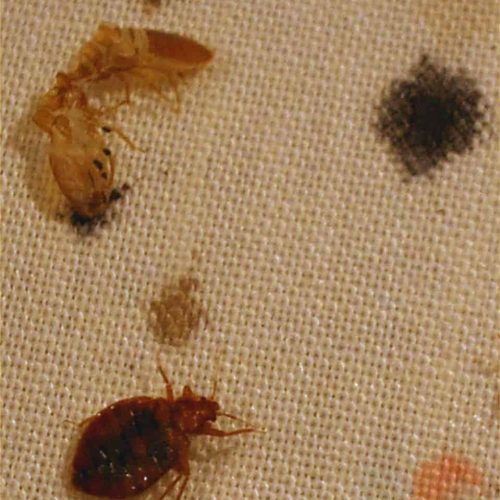
There are two types of shells you can find in your home:
- Exoskeleton from molting nymphs
- Hatched egg casings
Both of these shells are a sign of a growing population.
If you find exoskeletons, it means that you have a generation of nymphs going through their five stages before reaching adulthood.
You will typically find exoskeleton shells in the same locations you would find adult bed bugs.
Likewise, eggshells are an indication that the bed bugs are mating and growing the population.
Bed bug eggs have an adhesive that keeps them in position.
This generally keeps the eggs in a localized region even after they hatch.
Frequently Asked Questions (FAQ)
Where Do Bed Bugs Hide?
Bed bugs tend to hide in groups or near each other.
This is typically in undisturbed areas around your bedroom or other parts of your home.
They tend to hide near their host to make feeding as easy as possible.
This is why they tend to hide in seams, crevices, and folds in the fabric, furniture, and drapery.
The most common locations bed bugs hide are in bedrooms or where humans tend to spend a lot of time.
Below are some common locations where bed bugs tend to hide.
- Mattresses seams and folds
- Underneath mattresses
- Under box spring
- On box spring seams and fold as well as inside boxsprings, especially on the wood.
- On wood crevices on box spring
- Bed covers
- Pillow covers
- Drapery and curtains
- Small crevices or gaps on the bed frame
- Dressers and nightstands
- Other furniture near beds or couches
- Lamps
- Walls
- Behind hanging pictures and other hanging items.
- Holes or crevices on walls or floorboards.
- Inside couches
- On carpet
- On chairs and other furniture
- Window sills
How To Find Bed Bugs?
The best way to make sure you find the bed bugs in your home is to use the right tools.
High tech or expensive tools are not necessary to find bed bugs.
Tools that make bed bugs easier to see and get into crevices will make your life easier.
Below is the list of tools necessary before inspecting for bed bugs:
- Gloves
For safety reasons, always wear gloves when inspecting for bed bugs.
During your search, you may come in contact with droppings, blood, and live bed bugs.
Wearing gloves will prevent you from coming in direct contact with any bacteria caused by bed bugs.
- Flashlight
A flashlight will make it easier for you to spot bed bugs in seams, small crevices, and folds.
- Magnifying Glass
A magnifying glass will help you spot baby bed bugs and bed bug eggs.
Bed bug eggs and baby bed bugs are around 1mm in length, making them hard to spot with the naked eye, especially if it’s your first time doing so.
- Collection Containers
Collection containers will help store the bed bugs in a safe location for easy identification.
Proper identification of the insect in your home is essential to proper treatment.
The common bed bug is often the bed bug that infests homes. 5 other species could potentially get into your home as well.
Many other insects look like bed bugs, which can sometimes make it hard to identify bed bugs accurately.
- Forceps or Tweezers
Forceps or tweezers will allow you to catch bed bugs and place them inside your collection containers.
- Metal Probe or Credit Card
This will help you drive bed bugs out of small crevices, folds, and seams.
You can use Probes and old credit cards to slide into bed bug hiding spots.
This will disturb the bed bugs and encourage them to crawl out, or they will fall out, and you either kill them or capture them.
How to Treat Bed Bugs?
There are several different ways you can treat bed bugs.
Common treatments include:
- Washing, Steaming and Vacuuming
- Heat Treatment
- Mattress Encasement
- Fumigation
- Chemical Insecticide
Washing, Steaming, and Vacuum Treatments
This treatment process involves washing all fabrics, sheet covers, and drapery where bed bugs are located.
Items need to be washed on hot and dried on high temp to kill any bed bugs hiding inside.
The second step using a steamer on all major furniture where bed bugs are hiding.
Steamers can reach temperatures up to 180 degrees Fahrenheit, which can kill bed bugs instantly.
Using the steamer to steam all major hiding places for bed bugs.
The final steps is to vacuum up all crevices, folds, and seams where bed bugs hide.
This does two things:
- It picks up any dead bed bugs.
- Removes any remaining bed bugs that the steamer missed.
Vacuuming is an excellent way of removing a large number of bed bugs, eggs, and shells skin quickly.
Heat Treatment
Extreme heat is fatal to bed bugs.
And heat treatments take advantage of this.
Heat treatments increase the heat in structures, rooms, and items to a temperature lethal to bed bugs and eggs.
When treating smaller infestations you can use heat chambers to treat furniture and smaller
Mattress Encasement
Mattress and box spring encasements can be a great way to control bed bugs.
Encasements create a barrier between you and the bed bugs living in your mattress.
They are great if you are looking for an inexpensive and quick solution for your bed bugs.
Encasements are also great to use if you do not want to dispose of heavily infested mattresses.
Fumigation
Fumigation treatments release fumigant gas into bed bug-infested areas to control bed bugs in all life stages.
The great thing about fumigation is its ability to penetrate areas that are difficult to access, such as tiny folds, seams, and intricate fabric.
That said, fumigation requires extensive preparation.
You’ll need to vacate all living things in your home until all traces of the fumigant have dissipated.
Fumigation also requires professional assistance, which can be costly.
Chemical Insecticide
When using insecticides, make sure to read and follow all label instructions.
Pay special attention to what type of furniture, surfaces, and materials is the insecticide safe to use
You’ll also want to pay attention to how long it takes before re-application and follow accordingly.
How to Prevent Bed Bugs from Spreading?
The best way to prevent bed bugs from spreading is to take immediate action.
First, any rooms with bed bugs need to be completely cleaned.
This includes linens, pillowcases, and any other blankets that were exposed to bed bugs.
The second thing you need to do is decide on the method of treatment you want to take. There are several different approaches you can use to treat a room to prevent the spread of bed bugs.
Regardless of the type of treatment, it’s crucial that it begins as soon as possible.
When you do treat the room, it’s crucial that you are very careful when removing any items from the infested areas.
Any time should be properly covered and sealed using plastic bags or other forms of protection.
This is because bed bugs can fall off furniture, bedsheets, and even mattresses when you are cleaning. This will spread them to other rooms.
As you go through treatment, these bed bugs will survive, and they get the chance to rebuild the population.
